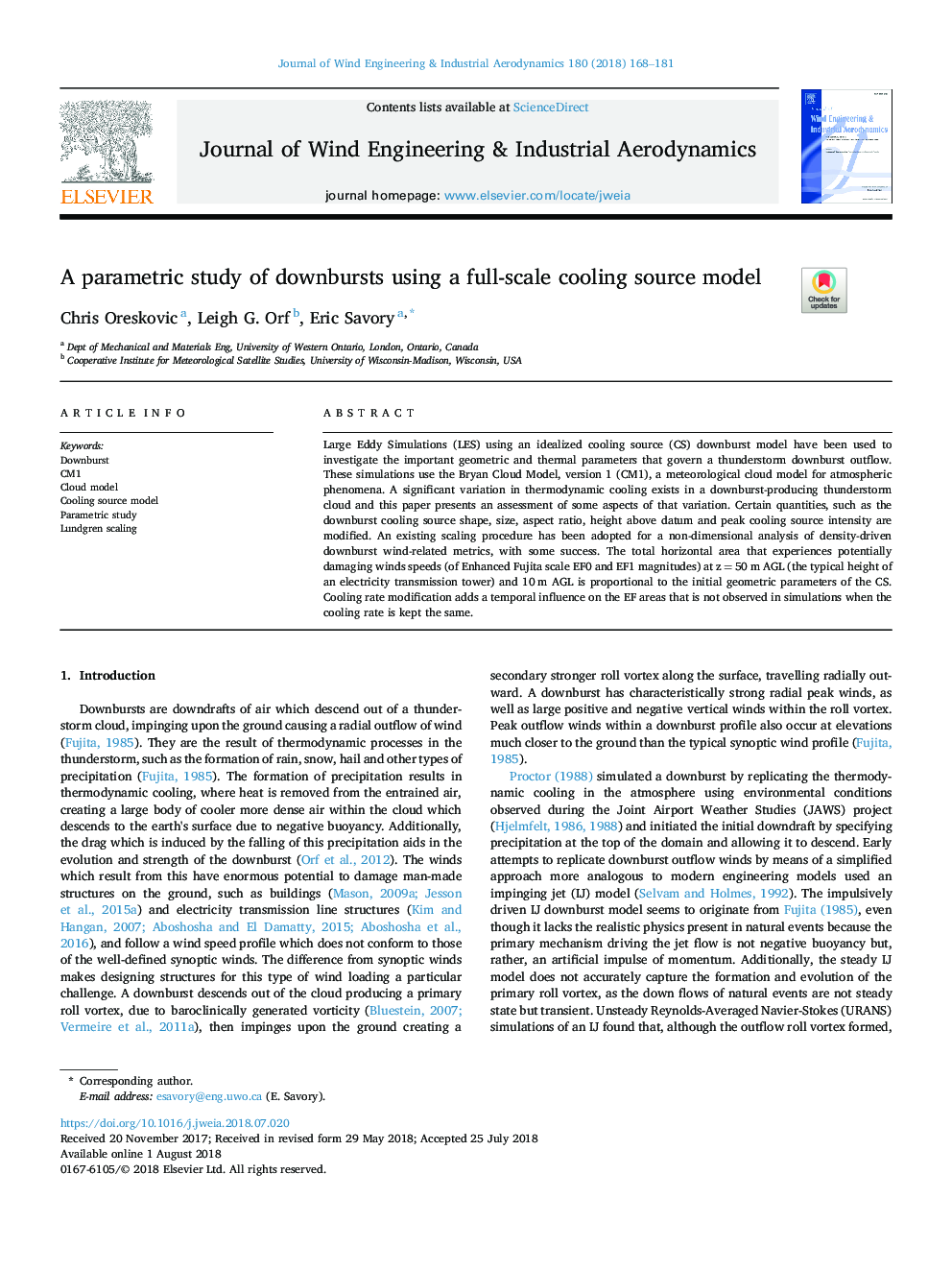| Article ID | Journal | Published Year | Pages | File Type |
|---|---|---|---|---|
| 6756795 | Journal of Wind Engineering and Industrial Aerodynamics | 2018 | 14 Pages |
Abstract
Large Eddy Simulations (LES) using an idealized cooling source (CS) downburst model have been used to investigate the important geometric and thermal parameters that govern a thunderstorm downburst outflow. These simulations use the Bryan Cloud Model, version 1 (CM1), a meteorological cloud model widely used for conducting idealized studies of atmospheric phenomena. A significant variation in thermodynamic cooling exists in a downburst-producing thunderstorm cloud and this paper presents an assessment of some aspects of that variation. Certain quantities, such as the downburst cooling source shape, size, aspect ratio, height above datum and peak cooling source intensity are modified. An existing scaling procedure has been adopted for a non-dimensional analysis of density-driven downburst wind-related metrics, with some success. The total horizontal area that experiences potentially damaging winds speeds (of Enhanced Fujita scale EF0 and EF1 magnitudes) at zâ¯=â¯50â¯m AGL (the typical height of an electricity transmission tower) and 10â¯m AGL is proportional to the initial geometric parameters of the CS. Cooling rate modification adds a temporal influence on the EF areas that is not observed in simulations when the cooling rate is kept the same.
Related Topics
Physical Sciences and Engineering
Energy
Renewable Energy, Sustainability and the Environment
Authors
Chris Oreskovic, Leigh G. Orf, Eric Savory,
